Kelly Jensen's Blog, page 39
October 21, 2018
Borrowed But Not Returned
I rarely borrow books from friends. Part of it is that I’m happy to pick up a copy of a title recommended to me at the library. The other part is knowing that, given the fact I regularly rack up sizable fines at the library for overdue books, I’ll likely not return books lent to me from others in any sort of timely manner, either.
When I moved in January and packed up eight years’ worth of living in the same place, one of my priorities was weeding my book collection. I managed to clean out quite a bit. Most went to a local shelter that gives books to young people who often enter the shelter with nothing but the clothing on their backs. A few went to the recycling bin because they weren’t in any worthwhile condition or they simply weren’t the kind of thing that might interest a younger reader. I didn’t think a whole lot about the books in my possession which weren’t mine. They ended up in the flat bags I moved books in and made their journey across state borders to settle into their new homes.
And yet, the books we borrow — whether we’re habitual borrowers or rare borrowers — tell us something, don’t they?
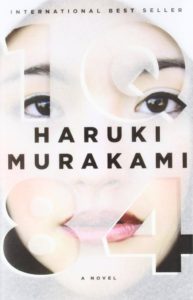 I know there are two books on my shelf which are borrowed from others. One is a massive literary tome and the other a slight book of comics.IQ84 by Haruki Murakami came to me in the fall a few years ago, while I was spending a long weekend with my friend in Houston. She was a fan of the book and knew I was a fan of Murakami’s weird fiction. I knew I wouldn’t get to read it in any reasonable time frame because it’s just so big, but she insisted I borrow it without worrying about getting it back to her in any reasonable time frame.
I know there are two books on my shelf which are borrowed from others. One is a massive literary tome and the other a slight book of comics.IQ84 by Haruki Murakami came to me in the fall a few years ago, while I was spending a long weekend with my friend in Houston. She was a fan of the book and knew I was a fan of Murakami’s weird fiction. I knew I wouldn’t get to read it in any reasonable time frame because it’s just so big, but she insisted I borrow it without worrying about getting it back to her in any reasonable time frame.
The book sits on my shelves still. I haven’t cracked it. I’m still intimidated by size, despite knowing I’d probably enjoy it. In the interim years, my friend left Houston, moved to Vermont, then moved to Ottawa and became a Canadian citizen.
Even though I haven’t read it and, quite frankly, don’t see myself reading it any time in the near future, each time I see it on my shelves I think of her and remember that weekend. I think, too, about how many great conversations she and I have had about books and reading, about recommendations we’ve passed back and forth. About the times she’s texted me from the airport to ask for a good airport bookstore title she could read while traveling around the word.
The other book still sitting on my shelf, unreturned, is one I’ve read. Then read. Then read again. It’s a book that I know I’ve had the chance to return numerous times, but I think back to how much I enjoy the book and it never seems top priority to return it when given the chance.
Early in the librarian career, I wanted to up my knowledge of comics and graphic novels, and a friend who loved comics (and at the time, was married to a fellow comic lover) brought a stack over for me to read. This included some superheroes, but it also included a lot of non-franchise, non-serialized titles to peruse. Peanutbutter and Jeremy’s Best Book Ever never seemed to return home with them.
Peanutbutter and Jeremy is a comic about a cat named Peanutbutter who dresses in a fancy hat and tie because she believes she works in an office. Jeremy is the clever crow who lives in the tree outside Peanutbutter’s house. The comic is much like Tom and Jerry but it’s really Peanutbutter and Jeremy — Jeremy spends his days trying to trick Peanutbutter but at the end of the day, they develop a close friendship. Kochalka’s art is delightful to look at, and I think part of why the comic resonated with me so much was that it’s appropriate for young readers and older ones, in a style that reminds me a lot of Sara Varon’s comics (Robot Dreams is my all-time favorite comic).
I wonder about returning the book in a different way now than I do with IQ84. The friend who lent it to me got it from the partner she’s no longer with. Would it be awkward to return it to her? I don’t know him well enough to broach the subject and, if I’m being honest, I wonder if it would stir weird things with him, especially if he is unaware I still have it. Maybe he never knew it was in my possession to begin with.
Perhaps I’m overthinking it all together and, after a certain time frame of it not being brought up, it’s now something for me to keep hold of and own as my own. An unexpected gift, given without the intention of it being so.
In my personal library, I can think only of these two books as borrowed. I definitely returned some titles to their rightful owners before moving, but these two hung on. Part of it is my interest in reading them (in the case of the Kochalka comic, rereading numerous times). But perhaps a bigger part is that both come steeped in specific memories and moments with individuals in my life that I hold onto and need to hold onto for just a little longer.
I’m grateful to not owe them late fees, as I’m forever in debt to my local public library.
October 18, 2018
This Week Around The Web
This week at Book Riot…
A giant round-up of new collective biographies of women and nonbinary people throughout history.
Tune into the latest episode of “Hey YA,” wherein Eric and I highlight some of the recent releases you may have missed, dig deep into friendship as it’s seen in YA lit, and end the show highlighting a few upcoming 2019 YA books for your TBR.
Elsewhere…
I’ve got a piece over at To Write Love On Her Arms that I’ve been chewing on for a long, long time. Please read and share, if you feel so compelled: There is no one way to “get it right.”
An awesome review of (Don’t) Call Me Crazy from Cleveland.com.
October 16, 2018
A Few Cybils Reads – Part I (Necromancy Edition)
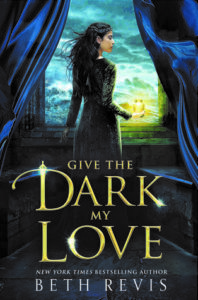 Give the Dark My Love by Beth Revis
Give the Dark My Love by Beth RevisNedra has been given a scholarship to attend Yugen Academy, where she plans to train as a medicinal alchemist. The northern part of the country, where Nedra lives, has been overrun by a plague that kills almost everyone it touches, and while Nedra’s family has remained safe from it so far, she knows the people who govern the country don’t have much interest in saving the lives of the poor northerners. The rich believe the plague is caused by bad hygiene. Nedra is determined to find a cure, and she finds a mentor in one of the teachers at the school. Even as they get closer to the truth about the plague, Nedra starts experimenting with necromancy, strictly forbidden by the law not only because it’s considered unnatural, but also because of what the practice of it does to the necromancer. But necromancy, Nedra believes, is the key to understanding the plague, which begins as necrosis of the limbs before making its way to the heart, where it kills.
The book alternates between Nedra’s perspective and that of her friend Grey, another student at the school. Grey is the son of a politician, a powerful man who pulls Grey into the city’s political machinations. There are rumblings of revolution: many people on the colony of Lunar Island, where the story takes place, would like to become independent and rule themselves. Grey’s storyline is interesting and eventually intersects with that of the plague, a nice bit of plotting that surprised me a few times before the end of the book. But ultimately, this story Nedra’s.
Revis’ book is a meditation on grief, and it’s heartbreaking and tragic and beautiful. Her writing is gorgeously mournful, telling the story of a good person’s descent into darkness in the midst of almost unbearable pain. Good speculative fiction always functions as a metaphor for things that are real, and Give the Dark My Love is a prime example of this. We as readers follow Nedra’s journey from hardworking girl with a purpose into obsession and finally into a darkness from which she cannot return. All the while, she is propelled by something very real and very human that affects all of us. Revis’ writing is such that we feel everything right alongside Nedra – and alongside Revis herself. Don’t skip reading her acknowledgments at the end.
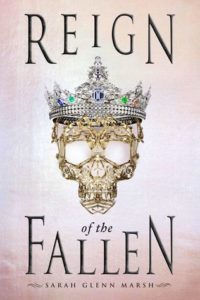 Reign of the Fallen by Sarah Glenn Marsh
Reign of the Fallen by Sarah Glenn MarshQuite the opposite of Revis’ book, in Reign of the Fallen, necromancers (like our protagonist Odessa) are prized. They’re necessary in order to keep the ruling class in power, who are resurrected whenever they die. But the Dead, once resurrected, must forever remain shrouded. If anyone sees any part of a Dead person, the Dead person turns into a zombie-like Shade, mindless and violent. It’s not a terribly appealing “life,” but it does allow certain people to remain in power – perhaps forever.
It’s a situation rife for trouble, and it’s kind of incredible that the society has gone as long as they have without a massive Shade epidemic. There are a few attacks here and there, but nothing that ever gets out of control. Until now. The Shade attacks have been increasing, and it soon becomes clear that someone is deliberately creating them and training them to attack. Odessa and her fellow necromancers are determined to find out who is behind it.
The premise is interesting, but it requires a massive suspension of disbelief for me. I’m perfectly willing to believe the Dead can be raised (I did love Sabriel as a teen), but it’s difficult for me to believe that Dead rulers with such easy weaknesses to exploit could remain in power for centuries. All someone would have to do is tug on the shroud, and the King would be a Shade. End of rule. That issue aside, the mystery itself is intriguing, and Odessa is an engaging character. Like Revis’ novel, Marsh’s novel is also an examination of grief, but it’s not as successful in this respect. I’d hand this to teens already interested in necromancy as a plotline.
October 14, 2018
October 2018 Debut YA Novels
It’s time again to round up a new batch of debut novels — this time for October!
This round-up includes debut novels, where “debut” is in its purest definition. These are first-time books by first-time authors. I’m not including books by authors who are using or have used a pseudonym in the past or those who have written in other categories (adult, middle grade, etc.) in the past. Authors who have self-published are not included here either.
All descriptions are from Goodreads, unless otherwise noted; I’ve found Goodreads descriptions to offer better insight to what a book is about over WorldCat. If I’m missing any debuts that came out in October from traditional publishers — and I should clarify that indie/small presses are okay — let me know in the comments.
As always, not all noted titles included here are necessarily endorsements for those titles. List is arranged alphabetically by title, with publication dates in parentheses.. Starred titles are the beginning of a new series.
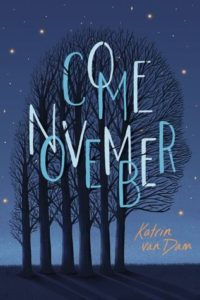 Come November by Katrin van Dam (10/30)
Come November by Katrin van Dam (10/30)It’s not the end of the world, but for Rooney Harris it’s starting to feel that way. It’s the beginning of senior year and her mom just lost her job. Even worse, she isn’t planning to get another one. Instead, she’s spending every waking moment with a group called the Next World Society, whose members are convinced they’ll be leaving Earth behind on November 17. It sounds crazy to Rooney, but to her mother and younger brother it sounds like salvation. As her mom’s obsession threatens to tear their lives apart, Rooney is scrambling to hold it all together. But will saving her family mean sacrificing her dreams—or theirs?
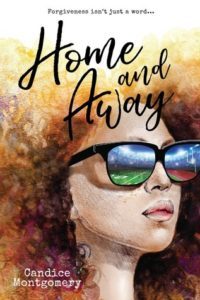 Home and Away by Candice Montgomery (10/16)
Home and Away by Candice Montgomery (10/16)Tasia Quirk is young, Black, and fabulous. She’s a senior, she’s got great friends, and a supportive and wealthy family. She even plays football as the only girl on her private high school’s team.
But when she catches her mamma trying to stuff a mysterious box in the closet, her identity is suddenly called into question. Now Tasia’s determined to unravel the lies that have overtaken her life. Along the way, she discovers what family and forgiveness really mean, and that her answers don’t come without a fee. An artsy bisexual boy from the Valley could help her find them—but only if she stops fighting who she is, beyond the color of her skin.
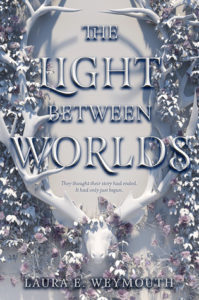 The Light Between Worlds by Laura E. Weymouth (10/23)
The Light Between Worlds by Laura E. Weymouth (10/23)Five years ago, Evelyn and Philippa Hapwell cowered from air strikes in a London bomb shelter. But that night took a turn when the sisters were transported to another realm called the Woodlands. In a forest kingdom populated by creatures out of myth and legend, they found temporary refuge.
When they finally returned to London, nothing had changed at all—nothing, except themselves.
Now, Ev spends her days sneaking into the woods outside her boarding school, wishing for the Woodlands. Overcome with longing, she is desperate to return no matter what it takes.
Philippa, on the other hand, is determined to find a place in this world. She shields herself behind a flawless exterior and countless friends, and moves to America to escape the memory of what was.
But when Evelyn goes missing, Philippa must confront the depth of her sister’s despair and the painful truths they’ve been running from. As the weeks unfold, Philippa wonders if Ev truly did find a way home, or if the weight of their worlds pulled her under.
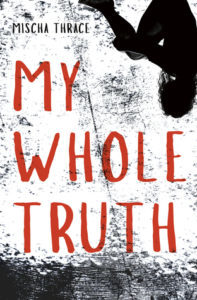 My Whole Truth by Mischa Thrace (10/2)
My Whole Truth by Mischa Thrace (10/2)Seventeen-year-old Seelie Stanton never wanted to kill someone. She never wanted to be invisible in her own family, never wanted to crush on her best friend Alyssa, and she definitely never wanted to know how effectively a mallet could destroy someone’s head.
But the universe doesn’t care what she wants. Shane Mayfield doesn’t care what Seelie wants either. When the former high school basketball star attacks her, she has no choice but to defend herself. She saved her own life, but she can’t bring herself to talk about what happened that night. Not all of it. Not even when she’s arrested for murder.
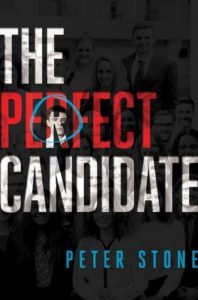 The Perfect Candidate by Peter Stone (10/2)
The Perfect Candidate by Peter Stone (10/2)When recent high school graduate Cameron Carter lands an internship with Congressman Billy Beck in Washington, DC, he thinks it is his ticket out of small town captivity. When he lacks connections and Beltway polish he makes up in smarts, and he soon finds a friend and mentor in fellow staffer Ariel Lancaster.
That is, until she winds up dead.
As rumors and accusations about her death fly around Capitol Hill, Cameron’s low profile makes him the perfect candidate for an FBI investigation that he wants no part of. Before he knows it—and with his family’s future at stake—he discovers DC’s darkest secrets as he races to expose a deadly conspiracy.
If it doesn’t get him killed first.
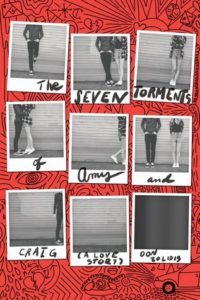 The Seven Torments of Amy and Craig by Don Zolidis (10/2)
The Seven Torments of Amy and Craig by Don Zolidis (10/2)Janesville, Wisconsin (cold in the sense that there is no God)
1994
The worst thing that’s ever happened to Craig is also the best: Amy. Amy and Craig never should’ve gotten together. Craig is an awkward, Dungeons & Dragons-playing geek, and Amy is the beautiful, fiercely intelligent student-body president of their high school.
Yet somehow they did. Until Amy dumped him. Then got back together with him. Then dumped him again. Then got back together with him again. Over and over and over.
Unfolding during their senior year, Amy and Craig’s exhilarating, tumultuous relationship is a kaleidoscope of joy, pain, and laughter as an uncertain future-and adult responsibility-loom on the horizon.
Craig fights for his dream of escaping Janesville and finding his place at a quirky college, while Amy’s quest to uncover her true self sometimes involves being Craig’s girlfriend?and sometimes doesn’t.
Seven heartbreaks. Seven joys.Told nonsequentially, acclaimed playwright Don Zolidis’s debut novel is a brutally funny, bittersweet taste of the utterly unique and utterly universal experience of first love.
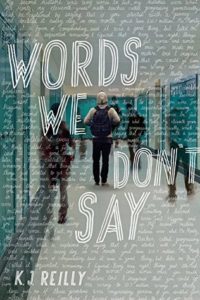 Words We Don’t Say by K. J. Reilly (10/2)
Words We Don’t Say by K. J. Reilly (10/2)Joel Higgins has 901 unsent text messages saved on his phone.
Ever since the thing that happened, there are certain people he hasn’t been able to talk to in person. Sure, he shows up at school, does his mandatory volunteer hours at the soup kitchen, and spends pretty much every moment thinking about Eli, the most amazing girl in the world. But that doesn’t mean he’s keeping it together, or even that he has any friends.
So instead of hanging out with people in real life, he drafts text messages. But he never presses send.
As dismal as sophomore year was for Joel, he doesn’t see how junior year will be any better. For starters, Eli doesn’t know how he feels about her, his best friend Andy’s gone, and he basically bombed the SATs. But as Joel spends more time at the soup kitchen with Eli and Benj, the new kid whose mouth seems to be unconnected to his brain, he forms bonds with the people they serve there-including a veteran they call Rooster-and begins to understand that the world is bigger than his own pain.
October 11, 2018
This Week Around The Web
Over on Book Riot this week…
Great mental health books for World Mental Health Day and beyond.
Add these 2018 YA horror novels to your TBR.
Gifts for people who love books and plants but are better at keeping one alive than the other.
Build yourself a Dewey Decimal wardrobe.
Elsewhere around the web…
If you loved these YA movie adaptations, you should read these books (over on School Library Journal!).
You can read an excerpt from Victoria Schwab’s essay from (Don’t) Call Me Crazy over on Goodreads.
October 7, 2018
YA Nonfiction To Round Out Your 2018 Reading
I promised to round out this year’s YA nonfiction offerings with the books publishing in the final quarter, and that day is here. If you’d like to take a look back at the YA nonfiction that hit shelves earlier this year, you’ll do well perusing this post and this post, which talk about the titles that are available now.
As in previous round-ups, these are books that aren’t educational publications/library bound nonfiction titles that are part of a series or intended for research purposes only. The titles absolutely include books perfect for research and reference, but these titles also serve as more recreational nonfiction reading for teens. It’s worth repeating this, too: finding every nonfiction title marketed to YA readers is challenging — with many small publishers putting these books out, in addition to the bigger and more well-known publishers, it’s impossible to find everything. So go in knowing this is incomplete, but it’s at least a good snapshot of many of the titles coming soon. Also be aware that like the rest of publishing, things tend to become more sparse after mid-November.
I’ve focused again on the vague description of “nonfiction for young readers,” as it can be tough to distinguish between middle school nonfiction and high school nonfiction. Many books fall into the 10-14 age range, if they’re not specifically geared for 14 and up, meaning that these nonfiction titles are good for either group of readers. All descriptions come from Goodreads.
Late 2018 YA Nonfiction Books
October
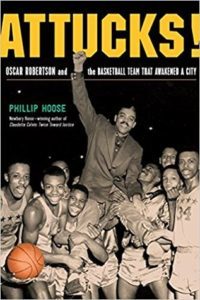 Attucks!: Oscar Robertson and The Basketball Team Team That Awakened a City by Phillip Hoose
Attucks!: Oscar Robertson and The Basketball Team Team That Awakened a City by Phillip HooseBy winning the state high school basketball championship in 1955, ten teens from an Indianapolis school meant to be the centerpiece of racially segregated education in the state shattered the myth of their inferiority. Their brilliant coach had fashioned an unbeatable team from a group of boys born in the South and raised in poverty. Anchored by the astonishing Oscar Robertson, a future college and NBA star, the Crispus Attucks Tigers went down in history as the first state champions from Indianapolis and the first all-black team in U.S. history to win a racially open championship tournament—an integration they had forced with their on-court prowess.
 Blacklisted: Hollywood, The Cold War, and The First Amendment by Larry Dane Brimner
Blacklisted: Hollywood, The Cold War, and The First Amendment by Larry Dane BrimnerWorld War II is over, but tensions between the communist Soviet Union and the US are at an all-time high. In America, communist threats are seen everywhere and a committee is formed in the nation’s capital to investigate those threats. Larry Dane Brimner follows the story of 19 men–all from the film industry–who are summoned to appear before the House of Representatives Committee on Un-American Activities. All 19 believe that the committee’s investigations into their political views and personal associations are a violation of their First Amendment rights. When the first 10 of these men refuse to give the committee the simple answers it wants, they are cited for contempt of Congress and blacklisted.
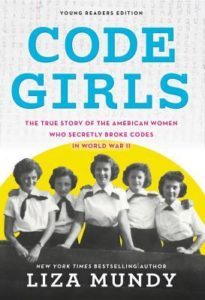 Code Girls: The True Story of the American Women Who Secretly Broke Codes in World War II by Liza Mundy
Code Girls: The True Story of the American Women Who Secretly Broke Codes in World War II by Liza MundyMore than ten thousand women served as codebreakers during World War II, recruited by the U.S. Army and Navy. While their brothers and boyfriends took up arms, these women moved to the nation’s capital to learn the top secret art of code breaking.
Through their work, the “code girls” helped save countless lives and were vital in ending the war. But due to the top secret nature of their accomplishments, these women have never been able to talk about their story–until now.
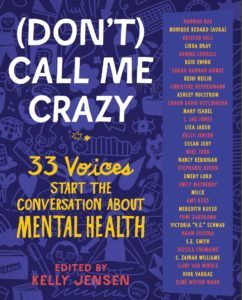 (Don’t) Call Me Crazy: 33 Voices Start The Conversation About Mental Health edited by Kelly Jensen
(Don’t) Call Me Crazy: 33 Voices Start The Conversation About Mental Health edited by Kelly JensenWho’s Crazy?
What does it mean to be crazy? Is using the word crazyoffensive? What happens when such a label gets attached to your everyday experiences?
In order to understand mental health, we need to talk openly about it. Because there’s no single definition of crazy, there’s no single experience that embodies it, and the word itself means different things—wild? extreme? disturbed? passionate?—to different people.
(Don’t) Call Me Crazy is a conversation starter and guide to better understanding how our mental health affects us every day. Thirty-three writers, athletes, and artists offer essays, lists, comics, and illustrations that explore their personal experiences with mental illness, how we do and do not talk about mental health, help for better understanding how every person’s brain is wired differently, and what, exactly, might make someone crazy.
If you’ve ever struggled with your mental health, or know someone who has, come on in, turn the pages, and let’s get talking.
Dear Heartbreak: YA Authors and Teens on the Dark Side of Love by Heather Demetrios
This is a book about the dark side of love: the way it kicks your ass, tears out your heart, and then forces you to eat it, bite by bloody bite. If you’ve felt this way, you’re not alone…
In this powerful collection, YA authors answer real letters from teens all over the world about the dark side of love: dating violence, break-ups, cheating, betrayals, and loneliness. This book contains a no-holds-barred, raw outpouring of the wisdom these authors have culled from mining their own hearts for the fiction they write. Their responses are autobiographical, unflinching, and filled with love and hope for the anonymous teen letter writers.
October 4, 2018
This Week Around The Web
I have so much to round up and share. But let me first start with this:
I sold another book, and it’ll be about the experiences of having a physical body. I’m so thrilled about having the opportunity to do this book, and it feels like the right book to follow up the topics of feminism and mental health. It’s been simmering in my mind for many years.
Over on Book Riot this week + the last couple of weeks…
5 fun bookish Instagram feeds to follow.
Nostalgic .
The ultimate guide to YA movie adaptations.
50 must-read YA books about mental illness.
The ultimate guide to Halloween bookmarks to make, to buy, and to download.
Over 125 YA books hitting shelves between October and the end of the year.
Find your perfect llama bookish gifts, including bookends, bookmarks, and more.
There’s a brand new episode of Hey YA this week! Eric and I talk about YA anthologies and great YA titles from small and indie presses.
Elsewhere around the web (aka: it was book pub week, so there’s a lot of stuff to share!)
I wrote an essay for Powell’s about why teens deserve smart books.
Want to read an essay from (Don’t) Call Me Crazy? How about the opportunity to read two? Check out Nancy Kerrigan’s piece over on Refinery29 and Adam Silvera’s piece over on To Write Love On Her Arms.
A nice shout out to (Don’t) Call Me Crazy over on Bustle!
October 2, 2018
Cybils 2018
I am absolutely thrilled to be a Cybils judge for the eighth (!!) year running in 2018. This will be my fourth year as a panelist for round 1 of YA speculative fiction, and I have to say, this is probably my favorite category to participate in (when my life allows for it). I love making my way through a huge list of books, reconnecting with the type of story I loved most as a teenager. I always end up finding new favorites I likely wouldn’t have read otherwise, including past finalists Death Sworn by Leah Cypess, An Inheritance of Ashes by Leah Bobet, and Song of the Current by Sarah Tolcser.
Nominations opened October 1, and I hope each of you will take just a few minutes to submit some titles. You can nominate one title per category, and each must have been published specifically for the stated age range (in the case of my category, teenagers/young adults) between October 16, 2017 and October 15, 2018. Because I’m a helpful kind of person, I’ve created a list of books that are eligible for YA speculative fiction this year below. These are books I’ve already read that I think would be worth considering or books I’m just excited to read. Be sure to check your title against the list of those already nominated so you don’t duplicate.
Children of Blood and Bone by Tomi Adeyemi
The Hazel Wood by Melissa Albert
Onyx and Ivory by Mindee Arnett
Damsel by Elana K. Arnold
Devils Unto Dust by Emma Berquist
The Cruel Prince by Holly Black
Contagion by Erin Bowman
The Belles by Dhonielle Clayton
A Conspiracy of Stars by Olivia A. Cole
Mirage by Somaiya Daud
Dread Nation by Justina Ireland
The Loneliest Girl in the Universe by Lauren James
Lifel1k3 by Jay Kristoff
Furyborn by Claire Legrand
Sanctuary by Caryn Lix
Black Wings Beating by Alex London
Isle of Blood and Stone by Makiia Lucier
Nightingale by Amy Lukavics
The Astonishing Color of After by Emily X. R. Pan (This may be more suited to YA Fiction, but I’m not sure!)
Seafire by Natalie C. Parker
Dance of Thieves by Mary E. Pearson
Sweet Black Waves by Kristina Perez
Give the Dark My Love by Beth Revis
Dry by Neal Shusterman
Beneath the Citadel by Destiny Soria
October 1, 2018
(DON’T) CALL ME CRAZY Is Available Now
“Crazy” is not a singular–or definitive–experience
This is a line from my new anthology, (Don’t) Call Me Crazy: 33 Voices Start The Conversation About Mental Health, which hits shelves today. But it’s not just a line that I wrote. It’s not just a line that’s true. It’s a line that, while editing this collection of essays and art, became more and more a mantra and way of understanding how mental illness works. It’s not singular. It’s not definitive. But, in conversations about mental health, there is a strange fixation on trying to define the word and trying to avoid using the word; eliminating the word from one’s vocabulary, however, singularizes and defines it as something not to be, as something that is too difficult to parse, tease apart, or knuckle into. As something not to say.
“Crazy” is the heart of the collection.
Unlike using the phrase “OCD” colloquially — “I’m so OCD” to describe what isn’t a debilitating illness but instead, a personality quirk of enjoying things neat, tidy, and precise — the term “crazy” isn’t tied to anything specific. It’s a term that has multiple meanings and experiences, that those who experience mental illness may find pride in, as much as those without mental illness may, indeed, experience periodically. It is a word that we’ve chosen to tiptoe around because it’s a term that’s slippery and uncomfortable to think about and sit with. No easy definition means no easy way to qualify the experience.
I’ve spent the last five years of my life exploring my own mental illness. When I hit the lowest point in my life, I had a support system that encouraged me to talk to my doctor and get help. That visit led to a diagnosis of depression — which I’d suspected — but also anxiety. It was anxiety that fueled my depression, and until I could better manage that, I wouldn’t be able to better manage my depression. Medication helped, especially after making some dosage adjustments. When I could finally dig around inside my mind with more clarity and see that it was anxiety holding me back from trying and experiencing new things, I was able to step into a yoga studio for the first time and add another tool to my arsenal for managing my mental wellness. I still take medication, but coupled with the work I’ve done practicing yoga, I’ve found a system to manage my anxiety and depression and better tease out truths from the lies my brain tells me.
(Don’t) Call Me Crazy was born from these two things: what it means to be “crazy” and what it means to take care of your mental health, whether or not you live with a mental illness. It’s a collection full of varied experiences with being crazy and with being “crazy”; with struggling to identify with a mental illness and with leaning into that mental illness with pride; with finding techniques to manage when you’re not feeling your best and with finding comfort in knowing that sometimes being “okay” is the best thing you can be. It’s about cracking open the doors that are often left shut because opening them and turning on the light means coming to terms with ideas and concepts that are difficult to understand, to place or arrange.
Although the book covers a vast array of mental illness experiences, from addiction to disordered eating, from OCD to borderline personality disorder, from suicide ideation to depression, it also covers some things which might be surprising to see in a book like this. The focus being mental health, as opposed to strictly mental illness, means that the book includes pieces on autism and neurodiversity, as well as tips and tricks for self-care and finding confidence in tricky situations.
I put this book together piece by piece with care and thought and an end goal that it’s a tool to help foster conversation about mental health. It’s my hope that teens will see themselves in it somewhere, as well as better empathize with people whose experiences they’ve seen but never quite understood. It’s also my hope that adults will read and discuss this book, then pass it along to the young people in their lives.
As I’ve said many times, I do think today’s teens are really doing the work when it comes to talking about and changing the discourse when it comes to mental health. Someone mentioned to me that that was a lot of pressure to put on teens, but I don’t think it is: they’re doing it without prompting because they’re better equipped to talk about mental health now than any other generation has been, thanks to the internet, to their peers, to the media they’re exposed to, and to simply living in a culture that’s challenging to navigate. This book is for those teens and for anyone else ready to have even more tools in their pockets.
It’s for anyone who is ready and willing to move beyond a comfortable misunderstanding of the word “crazy” and into a murky, tumultuous reality of living with a brain that doesn’t always make sense in a world that doesn’t always make sense. It’s raw, it’s honest, it’s difficult, and yet, it’s also full of hope, light, and love.
I’m spectacularly proud of (Don’t) Call Me Crazy and the 33 folks who contributed their work. They opened up in ways I couldn’t begin to imagine two years ago, and I’m lucky to have had their trust. I’m honored to have this book in the world.
I hope you’ll pick it up.
You can buy (Don’t) Call Me Crazy wherever books are sold. If you’d like to purchase it from my local independent bookstore, you can. Just search for the book by title. I’ll be doing some traveling for the book, and if you’d like to see me — especially if you’re in the Chicago metro area or in New York City or Ithaca — find the details on my personal website.
Thank you for helping me make this book a reality by supporting my work and supporting the work of the brave and unbelievably talented contributors in this collection. Together, we can all make the world a little bit of a better, safer, more supportive place.
“Opening up about mental health is difficult but necessary, asserts the editor of this thought-provoking anthology. Libba Bray personifies her obsessive-compulsive disorder and anxiety, while Stephanie Kuehn describes life with misophonia. Adam Silvera dispels the myth that successful or cheerful individuals don’t experience depression; Emery Lord seethes at the ignorant remarks about suicide she overhears at a Vincent van Gogh exhibit. Contributors also examine gender, sexuality, and ethnicity, as in Hannah Bae’s exploration of her Korean family’s reluctance to seek help for her mother’s schizophrenia. The rare lackluster entry never detracts from the whole. As in Jensen’s Here We Are: Feminism for the Real World, illustrations and a peppy design enhance this scrapbooklike volume. VERDICT Misconceptions about mental health still abound, making this honest yet hopeful title a vital selection for libraries.” — STARRED review from School Library Journal
A lively, compelling anthology […] the raw, informal approach to the subject matter will highly appeal to young people who crave understanding and validation. A valuable addition to library collections and for use by school counselors. This highly readable and vital collection demonstrates the multiplicity of ways that mental health impacts individuals.” — Kirkus Reviews
“Jensen (Here We Are: Feminism for the Real World, 2017) gathers together another varied, empowering collection of personal essays, poetry, artwork, and comics about the many ways people experience mental illness. Confessional and conversational, the contributions cover a wide array of conditions, treatments, and ways to manage symptoms, and while it can occasionally be a mixed bag, the best contributions are deeply resonant. Shaun David Hutchinson emphasizes that “Depression . . . may live in your skin, but it does not control you”; Emery Lord recounts visiting a Van Gogh exhibit during a depressive episode in a stirring, sharply funny essay; Hannah Bae describes how her troubled homelife contributed to her own disordered thinking; and Monique Bedard offers a moving prose poem about the pernicious, lasting effects of the systemic abuse of Native women. With this diverse array of contributors offering a stunning wealth of perspectives on mental health, teens looking for solidarity, comfort, or information will certainly be able to find something that speaks to them. Resources and further reading make this inviting, much-needed resource even richer.” –– Booklist Review
September 30, 2018
Even More 2019 YA Books With Teens Of Color On The Cover
Back in the summer, I pulled together a roundup of YA books hitting shelves in 2019 that had teens of color on the cover. I knew when I did that piece there would be more titles to include. I’m pleased to share yet another substantial collection of 2019 YA books featuring teens of color on the cover. I did not replicate any of the covers on the original post, so if you see something missing, check the linked list and see if it’s there. If there is something not on either list that’s been made public, I’d love to hear about them in the comments.
Descriptions come from Goodreads. Open up your TBR and add these excellent titles to it.
Even More 2019 YA Books With Teens of Color on the Cover
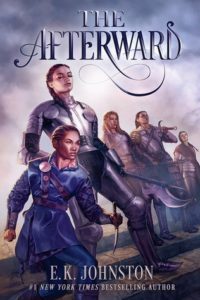 The Afterward by EK Johnston (February 19)
The Afterward by EK Johnston (February 19)It has been a year since the mysterious godsgem cured Cadrium’s king and ushered in what promised to be a new golden age. The heroes who brought the gem home are renowned in story and song, but for two fellows on the quest, peace and prosperity do not come easily.
Apprentice Knight Kalanthe Ironheart wasn’t meant for heroism this early in life, and while she has no intention of giving up the notoriety she has earned, her reputation does not pay her bills. With time running out, Kalanthe may be forced to betray not her kingdom or her friends, but her own heart as she seeks a stable future for herself and those she loves.
Olsa Rhetsdaughter was never meant for heroism at all. Beggar, pick pocket, thief, she lived hand to mouth on the city streets until fortune–or fate–pulled her into Kalanthe’s orbit. And now she’s quite reluctant to leave it. Even more alarmingly, her fame has made her recognizable, which makes her profession difficult, and a choice between poverty and the noose isn’t much of a choice at all.
Both girls think their paths are laid out, but the godsgem isn’t quite done with them and that new golden age isn’t a sure thing yet.
In a tale both sweepingly epic and intensely personal, Kalanthe and Olsa fight to maintain their newfound independence and to find their way back to each other.
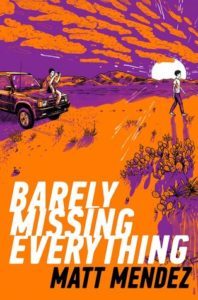 Barely Missing Everything by Matt Mendez (March 5)
Barely Missing Everything by Matt Mendez (March 5)Juan has plans. He’s going to get out of El Paso, Texas, on a basketball scholarship and make something of himself—or at least find something better than his mom Fabi’s cruddy apartment, her string of loser boyfriends, and a dead dad. Basketball is going to be his ticket out, his ticket up. He just needs to make it happen.
His best friend JD has plans, too. He’s going to be a filmmaker one day, like Quinten Tarantino or Guillermo del Toro (NOT Steven Spielberg). He’s got a camera and he’s got passion—what else could he need?
Fabi doesn’t have a plan anymore. When you get pregnant at sixteen and have been stuck bartending to make ends meet for the past seventeen years, you realize plans don’t always pan out, and that there some things you just can’t plan for…
Like Juan’s run-in with the police, like a sprained ankle, and a tanking math grade that will likely ruin his chance at a scholarship. Like JD causing the implosion of his family. Like letters from a man named Mando on death row. Like finding out this man could be the father your mother said was dead.
Soon Juan and JD are embarking on a Thelma and Louise–like road trip to visit Mando. Juan will finally meet his dad, JD has a perfect subject for his documentary, and Fabi is desperate to stop them. But, as we already know, there are some things you just can’t plan for
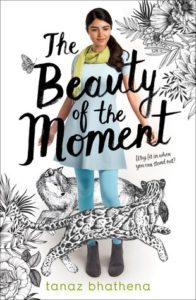 The Beauty of the Moment by Tanaz Bhathena (February 26)
The Beauty of the Moment by Tanaz Bhathena (February 26)Susan is the new girl—she’s sharp and driven, and strives to meet her parents’ expectations of excellence. Malcolm is the bad boy—he started raising hell at age fifteen, after his mom died of cancer, and has had a reputation ever since.
Susan’s parents are on the verge of divorce. Malcolm’s dad is a known adulterer.
Susan hasn’t told anyone, but she wants to be an artist. Malcolm doesn’t know what he wants—until he meets her.
Love is messy and families are messier, but in spite of their burdens, Susan and Malcolm fall for each other. The ways they drift apart and come back together are testaments to family, culture, and being true to who you are.
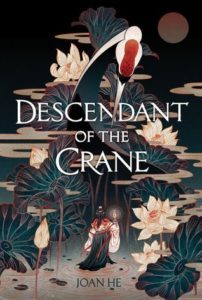 Descendant of the Crane by Joan He (April 2)
Descendant of the Crane by Joan He (April 2)“Tyrants cut out hearts. Rulers sacrifice their own.”
Princess Hesina of Yan has always been eager to shirk the responsibilities of the crown, but when her beloved father is murdered, she’s thrust into power, suddenly the queen of an unstable kingdom. Determined to find her father’s killer, Hesina does something desperate: she engages the aid of a soothsayer—a treasonous act, punishable by death… because in Yan, magic was outlawed centuries ago.
Using the information illicitly provided by the sooth, and uncertain if she can trust even her family, Hesina turns to Akira—a brilliant and alluring investigator who’s also a convicted criminal with secrets of his own. With the future of her kingdom at stake, can Hesina find justice for her father? Or will the cost be too high?
In this shimmering Chinese-inspired fantasy, debut author Joan He introduces a determined and vulnerable young heroine struggling to do right in a world brimming with deception.
 Don’t Date Rosa Santos by Nina Moreno (May 14)
Don’t Date Rosa Santos by Nina Moreno (May 14)Rosa is cursed by the sea–at least that’s what they say.
Dating her is bad news, especially if you’re a boy with a boat.
But Rosa feels more caught than cursed. Caught between cultures and choices. Between her abuela, a beloved healer and pillar of their community, and her mother, an artist who crashes in and out of her life like a hurricane. Between Port Coral, the quirky South Florida town they call home, and Cuba, the island her abuela refuses to talk about.
As her college decision looms, Rosa collides—literally—with Alex Aquino, the mysterious boy with tattoos of the ocean whose family owns the marina. With her heart, her family, and her future on the line, can Rosa break a curse and find her place beyond the horizon?
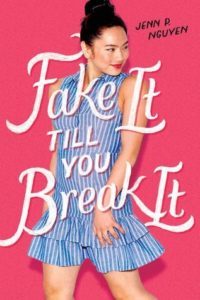 Fake It Till You You Break It by Jenn P Nguyen (June 18)
Fake It Till You You Break It by Jenn P Nguyen (June 18)Mia and Jake have known each other their whole lives. They’ve endured summer vacations, Sunday brunches, even dentist visits together. Their mothers, who are best friends, are convinced that Mia and Jake would be the perfect couple, even though they can’t stand to be in the same room together.
After Mia’s mom turns away yet another cute boy, Mia and Jake decide they’ve have had enough. Together, they hatch a plan to get their moms off their backs. Permanently. All they have to do is pretend to date and then stage the worst breakup of all time—and then they’ll be free.
The only problem is, maybe Jake and Mia don’t hate each other as much as they once thought…
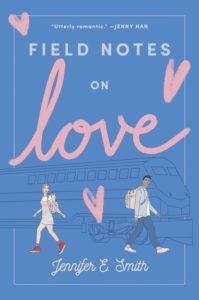 Field Notes on Love by Jennifer E Smith (March 5)
Field Notes on Love by Jennifer E Smith (March 5)Having just been dumped by his girlfriend, British-born Hugo is still determined to take his last-hurrah-before-college train trip across the United States. One snag: the companion ticket is already booked under the name of his ex, Margaret Campbell. Nontransferable, no exceptions.
Enter the new Margaret C. (Mae for short), an aspiring filmmaker with big dreams. After finding Hugo’s spare ticket offer online, she’s convinced it’s the perfect opportunity to expand her horizons.
When the two meet, the attraction is undeniable, and both find more than they bargained for. As Mae pushes Hugo to explore his dreams for his future, he’ll encourage her to channel a new, vulnerable side of her art. But when life off the train threatens the bubble they’ve created for themselves, will they manage to keep their love on track?
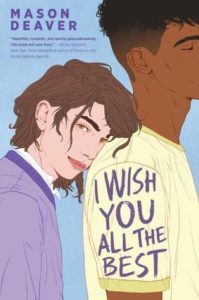 I Wish You All The Best by Mason Deaver (May 28)
I Wish You All The Best by Mason Deaver (May 28)When Ben De Backer comes out to their parents as nonbinary, they’re thrown out of their house and forced to move in with their estranged older sister, Hannah, and her husband, Thomas, whom Ben has never even met. Struggling with an anxiety disorder compounded by their parents’ rejection, they come out only to Hannah, Thomas, and their therapist and try to keep a low profile in a new school.
But Ben’s attempts to survive the last half of senior year unnoticed are thwarted when Nathan Allan, a funny and charismatic student, decides to take Ben under his wing. As Ben and Nathan’s friendship grows, their feelings for each other begin to change, and what started as a disastrous turn of events looks like it might just be a chance to start a happier new life.
At turns heartbreaking and joyous, I Wish You All the Best is both a celebration of life, friendship, and love, and a shining example of hope in the face of adversity.
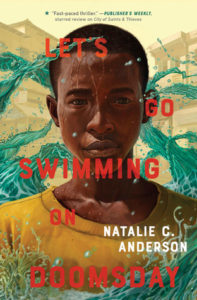 Let’s Go Swimming on Doomsday by Natalie C. Anderson (January 15)
Let’s Go Swimming on Doomsday by Natalie C. Anderson (January 15)When Abdi’s family is kidnapped, he’s forced to do the unthinkable: become a child soldier with the ruthless jihadi group Al Shabaab. In order to save the lives of those he loves, and earn their freedom, Abdi agrees to be embedded as a spy within the militia’s ranks and to send dispatches on their plans to the Americans. The jihadists trust Abdi immediately because his older brother, Dahir, is already one of them, protégé to General Idris, aka the Butcher. If Abdi’s duplicity is discovered, he will be killed.
For weeks, Abdi trains with them, witnessing atrocity after atrocity, becoming a monster himself, wondering if he’s even pretending anymore. He only escapes after he is forced into a suicide bomber’s vest, which still leaves him stumps where two of his fingers used to be and his brother near death. Eventually, he finds himself on the streets of Sangui City, Kenya, stealing what he can find to get by, sleeping nights in empty alleyways, wondering what’s become of the family that was stolen from him. But everything changes when Abdi’s picked up for a petty theft, which sets into motion a chain reaction that forces him to reckon with a past he’s been trying to forget.
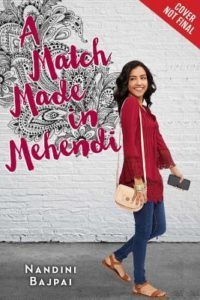 A Match Made in Mehendi by Nandini Bajpai (November 5)
A Match Made in Mehendi by Nandini Bajpai (November 5)Fifteen-year-old Simran “Simi” Sangha comes from a long line of Indian vichole-matchmakers-with a rich history for helping parents find good matches for their grown children. When Simi accidentally sets up her cousin and a soon-to-be lawyer, her family is thrilled that she has the “gift.”
But Simi is an artist, and she doesn’t want to have anything to do with relationships, helicopter parents, and family drama. That is, until she realizes this might be just the thing to improve her and her best friend Noah’s social status. Armed with her family’s ancient guide to finding love, Simi starts a matchmaking service-via an app, of course.
But when she helps connect a wallflower of a girl with the star of the boys’ soccer team, she turns the high school hierarchy topsy-turvy, soon making herself public enemy number one.
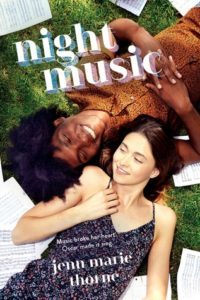 Night Music by Jenn Marie Thorne (March 19)
Night Music by Jenn Marie Thorne (March 19)Ruby has always been Ruby Chertok future classical pianist, heir to the Chertok family legacy, daughter of renowned composer Martin Chertok. But after bungling her audition for the prestigious Amberley School of Music–where her father is on faculty–Ruby is suddenly just . . . Ruby. And who is that again? All she knows is that she wants out of the orbit of her relentlessly impressive family, and away from the world of classical music for good. Yes? Yes.
Oscar is a wunderkind, a musical genius. Just ask any of the 1.8 million people who’ve watched him conduct his own compositions on YouTube–or hey, just ask Oscar. But while he might be the type who’d name himself when asked about his favorite composer and somehow make you love him more for it, Oscar is not the type to jeopardize his chance to study under the great Martin Chertok–not for a crush. He’s all too aware of how the ultra-privileged, ultra-white world of classical music might interpret a black guy like him falling for his benefactor’s white daughter. Right? Right.
But as the New York City summer heats up, so does the spark between Ruby and Oscar. Soon their connection crackles with the same alive, uncontainable energy as the city itself. But can two people still figuring themselves out figure out how to be together? Or will the world make the choice for them?
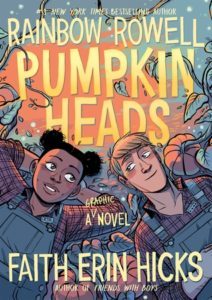 Pumpkinheads by Rainbow Rowell and Faith Erin Hicks (August 27)
Pumpkinheads by Rainbow Rowell and Faith Erin Hicks (August 27)Deja and Josiah are seasonal best friends.
Every autumn, all through high school, they’ve worked together at the best pumpkin patch in the whole wide world. (Not many people know that the best pumpkin patch in the whole wide world is in Omaha, Nebraska, but it definitely is.) They say good-bye every Halloween, and they’re reunited every September 1.
But this Halloween is different—Josiah and Deja are finally seniors, and this is their last season at the pumpkin patch. Their last shift together. Their last good-bye.
Josiah’s ready to spend the whole night feeling melancholy about it. Deja isn’t ready to let him. She’s got a plan: What if—instead of moping and the usual slinging lima beans down at the Succotash Hut—they went out with a bang? They could see all the sights! Taste all the snacks! And Josiah could finally talk to that cute girl he’s been mooning over for three years . . .
What if their last shift was an adventure?
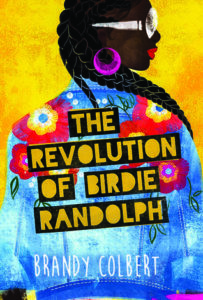 The Revolution of Birdie Randolph by Brandy Colbert (August 20)
The Revolution of Birdie Randolph by Brandy Colbert (August 20)Dove “Birdie” Randolph works hard to be the perfect daughter and follow the path her parents have laid out for her: She quit playing her beloved soccer, she keeps her nose buried in textbooks, and she’s on track to finish high school at the top of her class. But then Birdie falls hard for Booker, a sweet boy with a troubled past…whom she knows her parents will never approve of.
When her estranged aunt Carlene returns to Chicago and moves into the family’s apartment above their hair salon, Birdie notices the tension building at home. Carlene is sweet, friendly, and open-minded–she’s also spent decades in and out of treatment facilities for addiction. As Birdie becomes closer to both Booker and Carlene, she yearns to spread her wings. But when long-buried secrets rise to the surface, everything she’s known to be true is turned upside down.
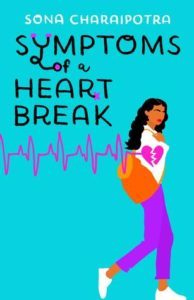 Symptoms of a Heartbreak by Sona Charaipotra (May 21)
Symptoms of a Heartbreak by Sona Charaipotra (May 21)Fresh from med school, sixteen-year-old medical prodigy Saira arrives for her first day at her new job: treating children with cancer. She’s always had to balance family and friendships with her celebrity as the Girl Genius—but she’s never had to prove herself to skeptical adult co-workers while adjusting to real life-and-death stakes. And working in the same hospital as her mother certainly isn’t making things any easier.
But life gets complicated when Saira finds herself falling in love with a patient: a cute teen boy who’s been diagnosed with cancer. And when she risks her brand new career to try to improve his chances, it could cost her everything.
It turns out “heartbreak” is the one thing she still doesn’t know how to treat.
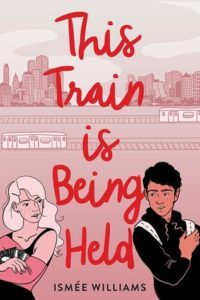 This Train Is Being Held by Ismée Amiel Williams (April 9)
This Train Is Being Held by Ismée Amiel Williams (April 9)When private school student Isabelle Warren first meets Dominican-American Alex Rosario on the downtown 1 train, she remembers his green eyes and his gentlemanly behavior. He remembers her untroubled happiness, something he feels all rich kids must possess. That, and her long dancer legs. Over the course of multiple subway encounters spanning the next three years, Isabelle learns of Alex’s struggle with his father, who is hell-bent on Alex being a contender for the major leagues, despite Alex’s desire to go to college and become a poet. Alex learns about Isabelle’s unstable mother, a woman with a prejudice against Latino men. But fate—and the 1 train—throw them together when Isabelle needs Alex most. Heartfelt and evocative, this romantic drama will appeal to readers of Jenny Han and Sarah Dessen.
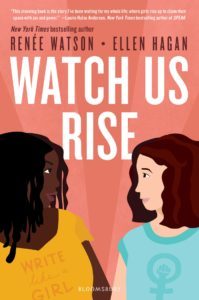 Watch Us Rise by Renée Watson and Ellen Hagan (February 12)
Watch Us Rise by Renée Watson and Ellen Hagan (February 12)Jasmine and Chelsea are sick of the way women are treated even at their progressive NYC high school, so they decide to start a Women’s Rights Club. They post everything online—poems, essays, videos of Chelsea performing her poetry, and Jasmine’s response to the racial macroaggressions she experiences—and soon they go viral. But with such positive support, the club is also targeted by online trolls. When things escalate, the principal shuts the club down. Jasmine and Chelsea will risk everything for their voices—and those of other young women—to be heard.
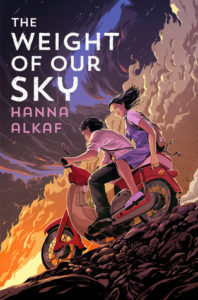 The Weight of Our Sky by Hanna Alkaf (February 5)
The Weight of Our Sky by Hanna Alkaf (February 5)A music loving teen with OCD does everything she can to find her way back to her mother during the historic race riots in 1969 Kuala Lumpur, Malaysia, in this heart-pounding literary debut.
Melati Ahmad looks like your typical movie-going, Beatles-obsessed sixteen-year-old. Unlike most other sixteen-year-olds though, Mel also believes that she harbors a djinn inside her, one who threatens her with horrific images of her mother’s death unless she adheres to an elaborate ritual of counting and tapping to keep him satisfied.
But there are things that Melati can’t protect her mother from. On the evening of May 13th, 1969, racial tensions in her home city of Kuala Lumpur boil over. The Chinese and Malays are at war, and Mel and her mother become separated by a city in flames.
With a 24-hour curfew in place and all lines of communication down, it will take the help of a Chinese boy named Vincent and all of the courage and grit in Melati’s arsenal to overcome the violence on the streets, her own prejudices, and her djinn’s surging power to make it back to the one person she can’t risk losing.
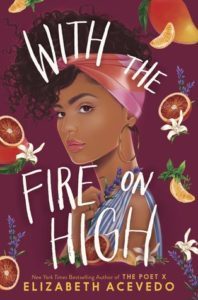 With The Fire On High by Elizabeth Acevedo (May 7)
With The Fire On High by Elizabeth Acevedo (May 7)With her daughter to care for and her abuela to help support, high school senior Emoni Santiago has to make the tough decisions, and do what must be done. The one place she can let her responsibilities go is in the kitchen, where she adds a little something magical to everything she cooks, turning her food into straight-up goodness. Still, she knows she doesn’t have enough time for her school’s new culinary arts class, doesn’t have the money for the class’s trip to Spain — and shouldn’t still be dreaming of someday working in a real kitchen. But even with all the rules she has for her life — and all the rules everyone expects her to play by — once Emoni starts cooking, her only real choice is to let her talent break free.












